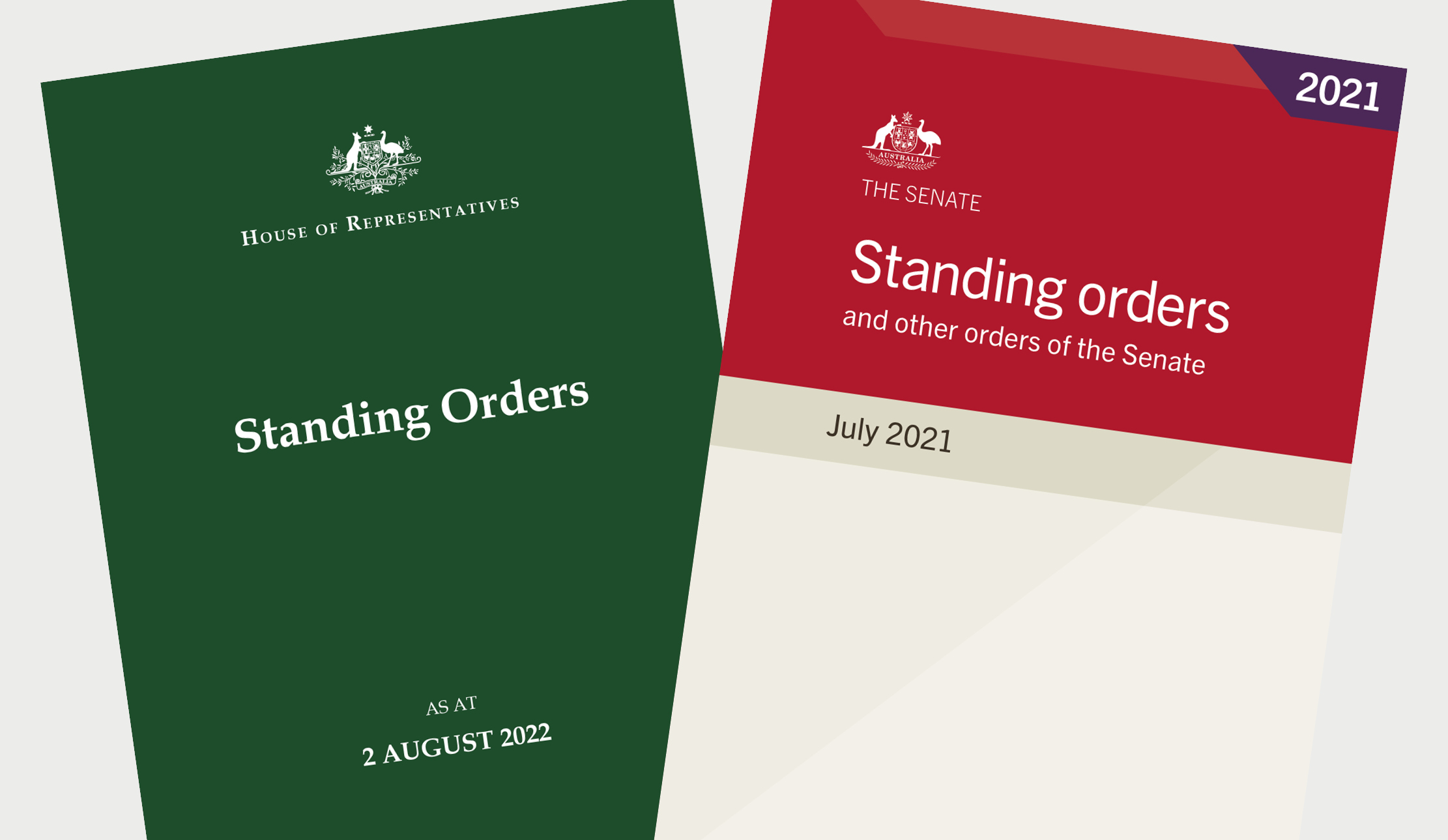Standing orders
Standing orders are the rules used to manage the work of the Senate and the House of Representatives. This fact sheet explains how the standing orders are used in the parliament and how they can be changed.
What will I learn?
- The standing orders are the rules used to manage the work of the Senate and the House of Representatives.
- The Senate and House of Representatives can make, change and suspend the standing orders.
What are standing orders?
Standing orders are the rules about how the Senate and the House of Representatives run their meetings. Along with the Australian Constitution and customs that have developed over many years, standing orders guide the way the Senate and House operate each day.
Contents

Standing orders of the Senate and the House of Representatives.
Parliamentary Education Office (peo.gov.au)
Standing orders of the Senate and the House of Representatives.

Parliamentary Education Office (peo.gov.au)
Description
This image shows the front covers of the Standing Orders of the Senate and the Standing Orders of the House of Representatives.
Copyright information
This work is licensed under a Creative Commons Attribution-NonCommercial-NoDerivs 3.0 Unported License.
You are free to share – to copy, distribute and transmit the work.
Attribution – you must attribute the work in the manner specified by the author or licensor (but not in any way that suggests that they endorse you or your use of the work).
Non-commercial – you may not use this work for commercial purposes.
No derivative works – you may not alter, transform, or build upon this work.
Waiver – any of the above conditions can be waived if you get permission from the copyright holder.
The Senate and House standing orders are similar but not the same. Each has over 200 rules, which include details about:
- the election of the President of the Senate and the Speaker of the House of Representatives – the Presiding Officers
- how long members of parliament’s speeches, questions and replies can be
- how votes are taken
- how Question Time works
- how to deal with petitions
- disorderly behaviour and how it will be dealt with.
If a member of parliament thinks a rule in the standing orders has been broken, they can bring attention to it by calling a 'point of order'. The Presiding Officers who runs the meeting then has to decide if the rule has been broken. The Clerk sometimes assists with this because they have expert knowledge of the standing orders.
Changing standing orders
Section 50 of the Constitution gives the Senate and House of Representatives the power to make and change the rules about how they run their meetings.
The Senate or House can make sessional orders – temporary rules. This allows members of parliament to try new ways of doing things before deciding to make a permanent change to the rules.
Standing orders are often temporarily suspended. This allows the Senate or House to change the way it normally runs its meetings. By suspending standing orders, senators and members might be able to:
- introduce a bill – proposed law – which has not been scheduled for debate
- give more time for speeches
- change the schedule of the meeting
To suspend standing orders, an absolute majority – more than half of the total number of senators or members of House of Representatives, must agree.
